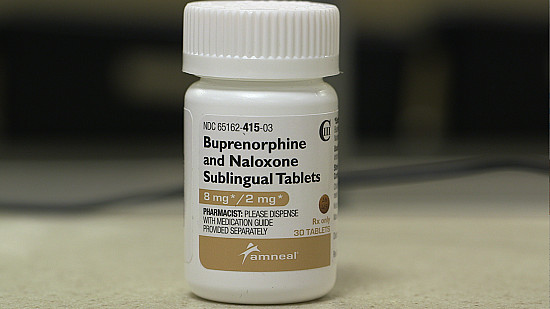Harvard Health Blog
Report highlights the dangers of opioid painkillers

Whenever I read or write about the overuse of so-called opioid painkillers it is with mixed feelings. As a lifelong back-pain patient who once depended on them for pain relief, I appreciate the challenge posed by opioids to people in pain and their doctors. People in agonizing pain want it to stop, but opioids are often a poor long-term solution. Doctors want to help their patients, so they may prescribe opioids for extended periods despite well-founded reservations.
At the same time, the epidemic of abuse of these painkillers has led to numerous deaths. Like many Americans, I know people whose lives were destroyed—who ended up in rehab, the legal system, or the grave—because of prescription painkiller abuse. An article this week in the New England Journal of Medicine pegs the toll at nearly 17,000 fatalities in 2010.
Hydrocodone (Vicodin) and oxycodone (Oxycontin, Percocet, Percodan) are the most widely used and abused of the opioids. Others in this family of drugs are codeine, fentanyl (Duragesic patch), hydromorphone (Dilaudid), meperidine (Demerol), morphine (MS Contin), and tramadol (Ultram). These drugs block pain perception in the brain.
Doctors are learning to say no to opioids, but at the same time have limited scientific guidance on when and how to best use opioids for chronic pain, according to a report published online in the Annals of Internal Medicine this week by a National Institute of Health expert panel. It follows on the heels of a position statement published in September 2014 by the American Academy of Neurology, stating that the harms of opioids often outweigh the benefits for treating chronic noncancer pain.
Dr. James Rathmell, the Henry Knowles Beecher Professor of Anesthesia at Harvard-affiliated Massachusetts General Hospital, sums up the doctor's dilemma this way: "The patient is in terrible pain and wants to try it. Who am I to say no?"
At the same time, Dr. Rathmell emphasizes that whenever opioids are prescribed, the focus needs to be on limits. "We should never use these drugs unless they're the only thing that will be effective," he says, "and then when we use them we should prescribe them for the shortest possible time."
More isn't better
How much of an opioid is needed to block pain perception in the brain is a moving target—and the trajectory is always upward. After a brief honeymoon of profound pain relief when you first start taking opioids, their pain-numbing effect fades and the dose escalates rapidly. In months, you can end up taking dangerously high doses just to maintain the same level of relief.
"This isn't a good long-term solution—but not because it doesn't work today or tomorrow," Dr. Rathmell says. "What do we do when it's not working as well next month? The knee jerk response is to raise the dose, but where do we stop? Do we stop when you are falling asleep in your soup every night at dinner? Do we stop when you fall down and break your hip?"
In my case, the dose I needed to quell my severe back pain kept getting higher. I vividly remember the daily clock-watching between doses and the embarrassing pleading for more refills. Fortunately, surgery to repair a herniated disc worked. I successfully tapered off the drugs. Since then, regular exercise and stretching, plus good sitting and working habits, have reduced my back pain flare-ups to one or two a year. They last a week or two and require no more than hefty doses of ibuprofen and hot baths.
When opioids help (for a while)
No one is proposing to withhold opioids during the "acute" phase of a pain condition that would be relieved by these drugs. This means the hours, days, and weeks it takes your body to heal from an injury or surgery.
The general rule of thumb is to use them for four to six weeks, then taper off and switch to other options. People recovering from a flare-up of back pain, a severely injured joint, or surgery can often transition to acetaminophen (Tylenol) or a nonsteroidal anti-inflammatory drug (NSAIDs) like ibuprofen (Advil, Motrin) or naproxen (Aleve).
What's at issue is treating chronic pain—pain that just won't go away, doesn't get better, or worsens. For the more common pain conditions—like back pain, chronic headache, and fibromyalgia—opioids may at some point offer little or no relief but cause side effects. Opioids can cause severe constipation as well as dangerous sedation. A person who takes an opioid can become cognitively impaired and confused. Accidental overdose can happen if someone hoards a few extra pills to pop in hope of a good night's sleep, or if opioids are combined with other prescription drugs that sedate. Opioids and alcohol are notoriously deadly mix.
The rules are different for long-term pain from cancer. Carefully managed but increasing doses of opioids may be the best option.
Get extra help
So what should you do if you have chronic pain and start to hit the limits of opioids? "If there has been no benefit from other approaches and you have moderate to severe pain that is ongoing, you may want to see a pain specialist and talk about the various options," Dr. Rathmell says. Pain specialists are often anesthesiologists by training, and have special expertise in the safe use of opioids and deploying other options for long-term pain control.
What may be needed is not a single pill, but a portfolio of tools. For example, certain antidepressants and antiseizure drugs can help control chronic pain from injured nerves. Specialized psychological counseling as well as complementary and alternative treatments, like acupuncture and meditation, can also help people with unremitting pain cope better.
Disclaimer:
As a service to our readers, Harvard Health Publishing provides access to our library of archived content. Please note the date of last review or update on all articles.
No content on this site, regardless of date, should ever be used as a substitute for direct medical advice from your doctor or other qualified clinician.















